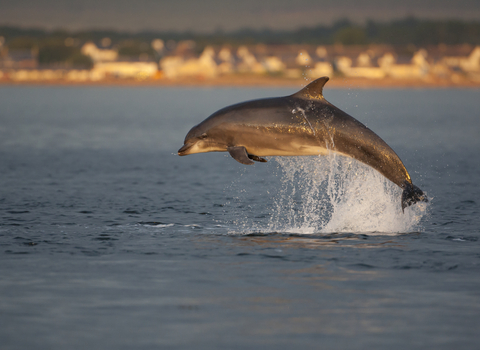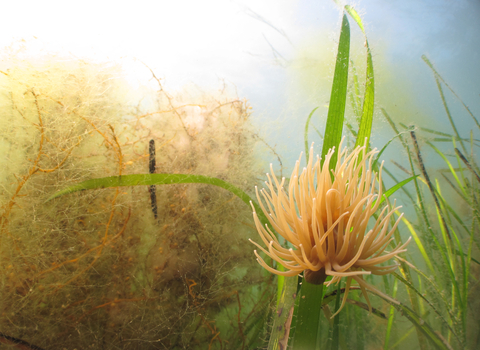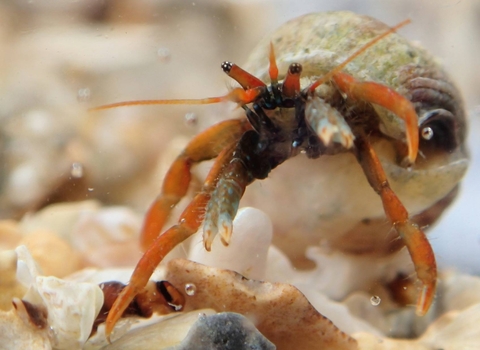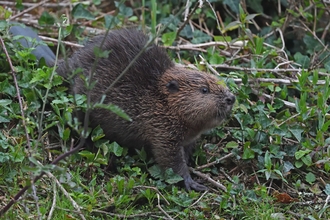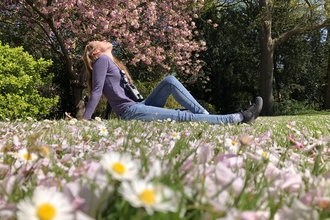As the summer holidays begin and National Marine Week takes place, it’s a great time to go wildlife watching on our coastline! Head out to the Cornish cliffs to catch sight of common dolphins, or enjoy a snorkel in our warm waters to see a plethora of fish swimming through our kelp forests.
Here are some of August's highlights...
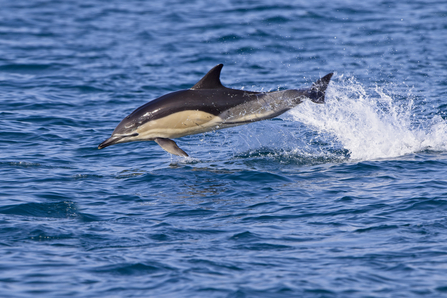
Common Dolphin, Image by Tony Mills (featured in Cornwall Wildlife Trust's 2022 Wild Cornwall Calendar)
Common Dolphins
Common Dolphins may be a familiar site in our Cornish waters, but their acrobatic displays and bowriding make them a delight to see. They are highly social animals and can form superpods – huge groups made up of thousands of individuals! They have a distinctive hourglass pattern on their sides, including a yellow-cream area starting behind their beak, which makes them easily identifiable.
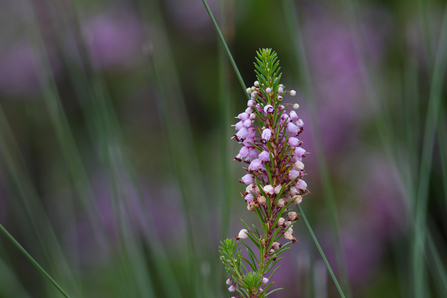
Cornish Heath. Image by Jeremy Northcott
Cornish heath
The Lizard Peninsula contains unique habitats which are internationally important due to its location, and the stark contrast in geology with the rest of Cornwall, Perhaps the most obvious speciality is the Cornish heath which grows throughout the Lizard moors. Long, purple anthers emerge from pale pink bells, clustered halfway up the stem. Look closer and you may find colourful insects hidden within the flower spikes, such as the iridescent Rose Chafer.
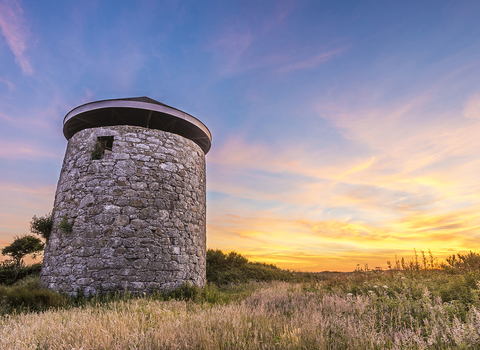
Windmill Tower at sunset at Cornwall Wildlife Trust's Windmill Farm nature reserve. Image by Ben Watkins
Windmill Farm
This month visit our Windmill Farm nature reserve on The Lizard, managed in partnership with Cornwall Birdwatching and Preservation Society. This site is a must-see for dragonfly and damselfly enthusiasts, with species such as common darter and beautiful demoiselle spotted amongst the many ponds and scrapes. As well as taking in the reserve’s rich archaeological heritage, with its World War Two pillboxes and Bronze Age barrows, keep your eyes peeled for reptiles such as grass snakes and slow worms basking in the summer sun.
Snorkeller and spider crabs. Image by Matt Slater
Spider crab gathering
Every year, between late summer and early autumn, spider crabs rally together in their hundreds to moult their shells. During the moulting process, they crack open their exoskeletons and become much softer, therefore becoming vulnerable to predators. By gathering in large groups and using a ‘safety in numbers’ strategy, these long-legged creatures give themselves the best chance of survival before returning to a more solitary life. This underwater spectacle has been witnessed this year in St Ives, Newquay, Falmouth, St Austell Bay and on the Lizard. Keep your eyes peeled the next time you go for a snorkel!
Seagrass bed at St. Mawes. Image by Matt Slater
Spectacular seagrass
Sheltered bays along Cornwall’s south coast and estuaries are home to an incredible ecosystem. Seagrass beds are beautiful underwater meadows, providing a valuable habitat and nursery ground for many marine species. They also capture carbon by storing organic matter through their deep roots – this is known as ‘blue carbon’. Seagrasses are the only flowering plants able to live in seawater and pollinate while submerged. During August, their bright green fronds have grown to their longest and their seeds have ripened, ready to be shed at the end of summer.
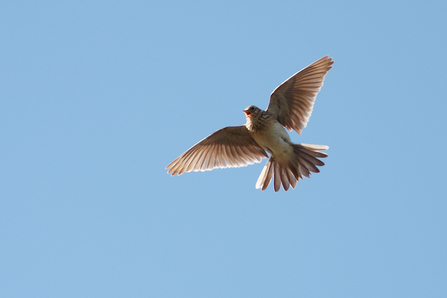
Skylark. Image by Stefan Johansson
Skylarks
While you're out on the coastpath, listen out for skylarks singing away. Male skylarks can be spotted rising almost vertically from farmland, grassland, saltmarshes and moorland. They hover effortlessly, singing from a great height, before parachuting back down to earth. These long and complicated song-flights can last for up to an hour and the birds can reach 300m before descending.
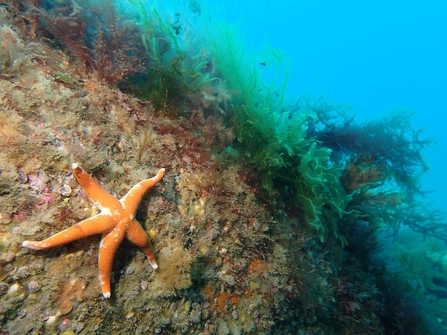
Bloody Henry Sea Starfish near Trevose Head, Image by Matt Slater
Take part in National Marine Week
National Marine Week is The Wildlife Trusts’ annual celebration of our seas. This year, in Cornwall, we’ll be celebrating it from 29th July to 6th August with a range of rockpool rambles, snorkels, beach cleans and more. The events will be hosted by members of the Your Shore Network, made up of 17 community-led marine conservation groups across Cornwall, as well as Cornwall Wildlife Trust’s very own marine experts.
Go WILD this summer!
Curious about what else can be found this season? Dive deeper into the topic of summer wildlife with our blogs and articles below.

